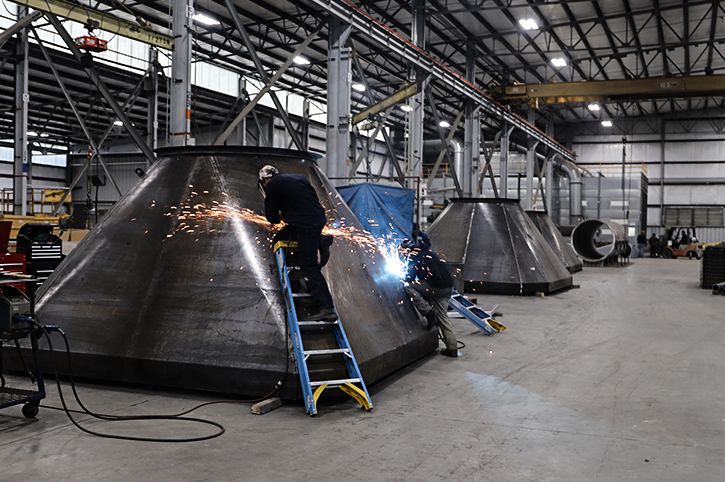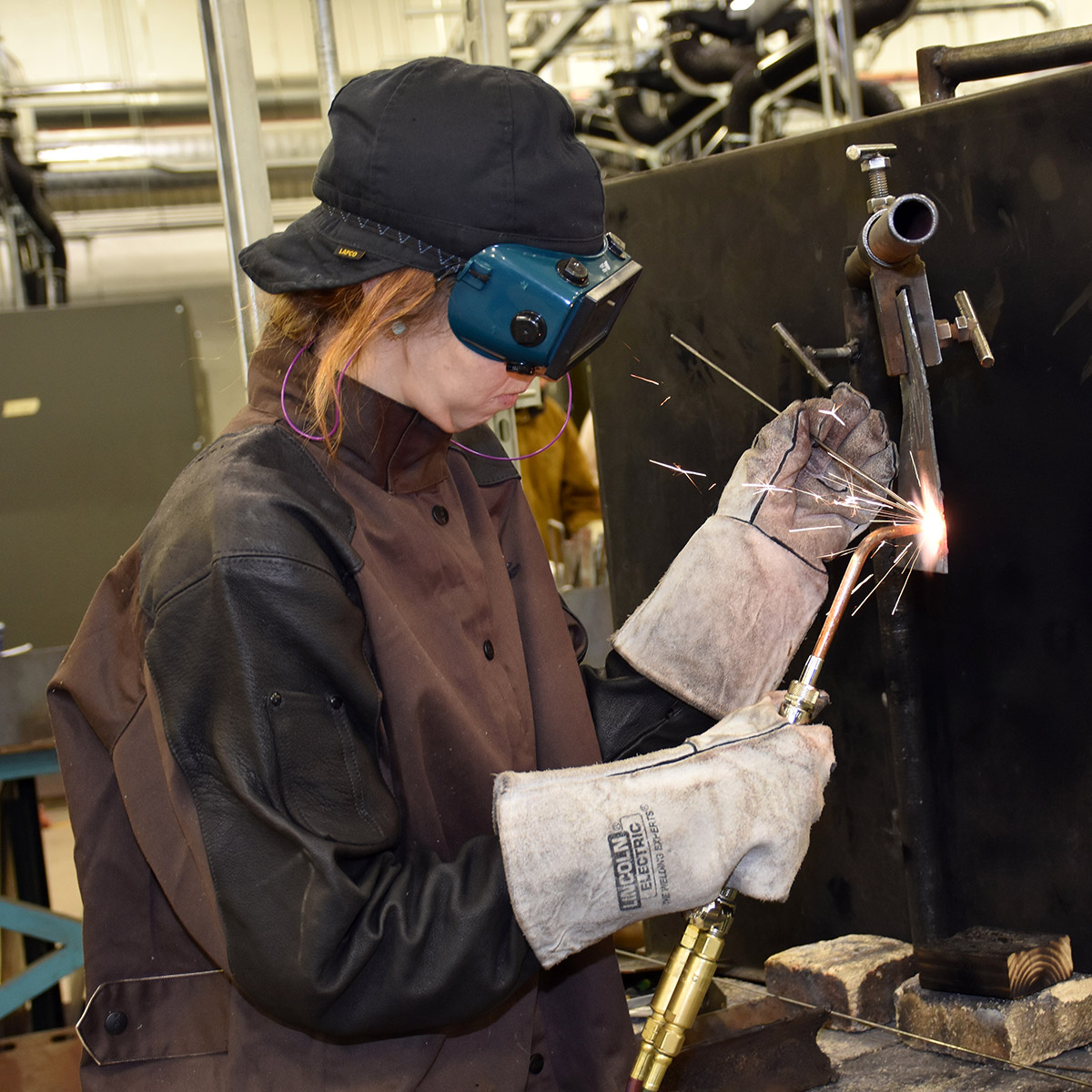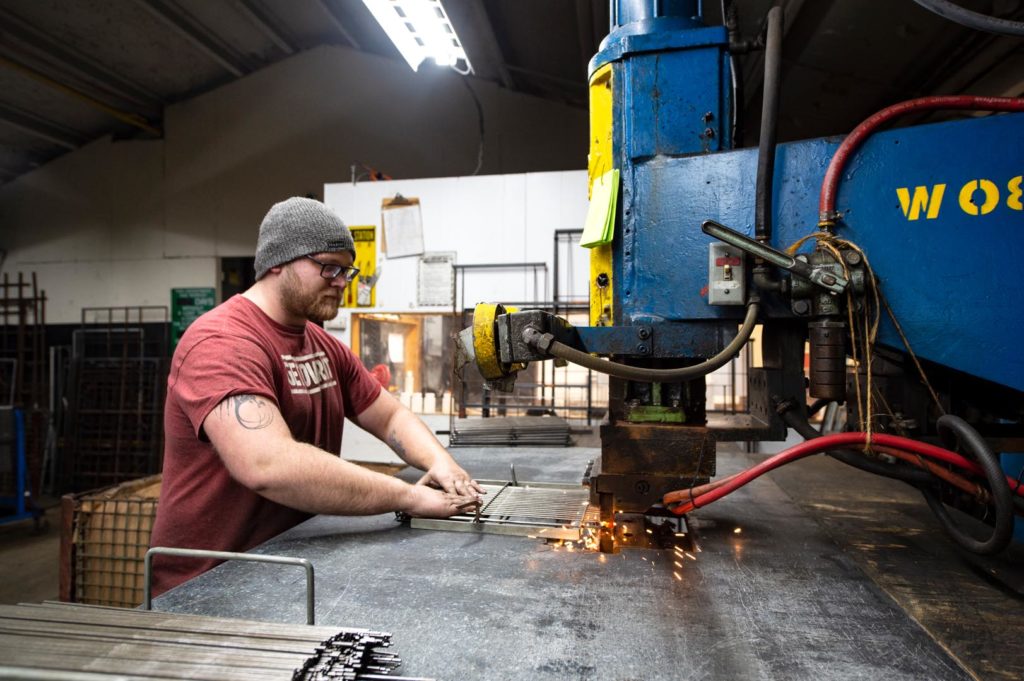Common Welding Repair Service Issues and How to Address Them Effectively
Welding repairs typically come across a series of issues that can endanger the stability of the end product. Typical issues consist of insufficient penetration, porosity, and misalignment, among others. Each issue presents distinct obstacles that need details approaches for resolution. Recognizing these problems is essential for welders aiming to enhance their skills and results. This discussion will certainly explore these usual welding repair issues and effective techniques to address them.
Inadequate Penetration
Poor infiltration occurs when the weld steel falls short to totally fuse with the base product, resulting in weak joints and potential architectural failures. This problem often stems from inadequate heat input, inaccurate electrode angle, or inappropriate welding rate. Welders may experience poor infiltration due to a miscalculation of the necessary criteria for a specific material density or type. In addition, contamination on the base product's surface can prevent reliable bonding, aggravating the problem. To address poor infiltration, welders must ensure suitable setups on their equipment and keep a tidy work surface area. Regular examination of welds is suggested to identify any deficiencies early, permitting prompt improvements and the prevention of jeopardized structural integrity in bonded settings up.
Porosity
Porosity is a typical flaw in bonded joints that shows up as little gas bubbles entraped within the weld steel. This flaw can endanger the stability of the weld, bring about reduced strength and potential failure under stress and anxiety. Belgrade Welding. Porosity typically develops from contamination, dampness, or improper welding techniques, which allow gases to get away right into the liquified weld swimming pool. To deal with porosity, welders ought to ensure proper surface preparation, maintain a clean workplace, and use ideal welding specifications. Additionally, picking the best filler material and shielding gas can minimize gas entrapment. Normal examination and screening of welds can aid identify porosity early, guaranteeing prompt corrective actions are taken, thereby maintaining the top quality and reliability of the welded framework
Misalignment
Imbalance in welding can arise from different variables, consisting of improper configuration and thermal growth. Comprehending the source is necessary for effective resolution. Numerous modification techniques are available to realign elements and guarantee structural honesty.
Reasons for Misalignment
Welding imbalance commonly comes from a range of underlying problems that can jeopardize structural stability. One main cause is improper fit-up of components before welding, which can bring about spaces and unequal surface areas. Variants in thermal development throughout the welding process can additionally lead to distortion, particularly if the materials being signed up with have various coefficients of growth. Additionally, inadequate fixturing and securing may fail to hold components safely in position, resulting in movement throughout welding. Inadequately maintained equipment, including welding makers and tools, may introduce incongruities in the weld bead, more contributing to imbalance. Driver error, stemming from inadequate training or experience, can also play a substantial duty in producing misaligned welds.

Modification Techniques Readily Available
Resolving misalignment successfully requires a combination of corrective techniques tailored to the details concerns handy. One typical approach is using jigs or components to hold components in the proper setting throughout welding, making sure constant alignment. Furthermore, pre-heating the materials can help decrease distortion and boost fit-up. For considerable imbalance, mechanical adjustment strategies, such as making use of hydraulic jacks or clamps, can be employed to correct the setting prior to welding. Post-weld warm therapy may likewise be necessary to alleviate stresses created by misalignment. Finally, mindful evaluation and change during the configuration phase can stop misalignment issues from ending up being significant troubles, advertising a smoother welding procedure and boosting overall architectural stability.
Distortion
Distortion is a common challenge in welding that can arise from different aspects, consisting of irregular cooling and heating. Comprehending the reasons for distortion is important for executing efficient avoidance methods. Addressing this concern not just enhances architectural stability but likewise improves the general top quality of the weld.
Sources of Distortion
When subjected to the extreme heat of welding, products commonly undergo changes that can cause distortion. This sensation mainly emerges from thermal growth and contraction throughout the welding procedure. As the weld location warms up, the material broadens; upon air conditioning, it contracts, which can create internal stresses. Furthermore, unequal heating throughout a work surface can worsen these stress and anxieties, resulting in warping or bending. The sort of product likewise plays a substantial function; steels with varying thermal conductivity and coefficients of expansion may react differently, bring about unforeseeable distortions. Furthermore, bad joint design and poor fixturing can add to imbalance throughout welding, raising the likelihood of distortion. Recognizing these reasons is essential for reliable welding fixing and prevention methods.
Prevention Techniques
Efficient avoidance methods for distortion throughout welding concentrate on controlling warmth input and ensuring appropriate joint design. Preserving a regular warmth input aids to decrease thermal expansion and tightening, which can lead to distortion. Using techniques such as pre-heating the workpiece can additionally decrease the temperature slope, promoting uniform home heating. Additionally, choosing ideal joint styles, such as T-joints or lap joints, can boost security and decrease anxiety concentrations. Carrying out appropriate fixturing to protect the work surfaces in area further help in maintaining positioning during the look at here now welding procedure. Finally, staggered welding series can distribute warm a lot more uniformly, stopping localized distortion. By using these techniques, welders can greatly decrease the probability of distortion and enhance the general top quality of their welds.
Splitting
Fracturing is an usual issue encountered in welding repair work, frequently arising from various factors such as incorrect air conditioning rates, product selection, or poor joint prep work. The occurrence of fractures can significantly jeopardize the stability of the weld, bring about potential failures during operation. To address this concern, welders need to initially assess the origin creates, making certain that products work and suitably chosen for the particular application. Furthermore, regulating the cooling price throughout the welding procedure is essential; quick air conditioning can cause anxiety and lead to cracking. Correct joint layout and preparation additionally contribute to reducing the danger. Implementing these approaches can enhance weld high quality and durability, ultimately minimizing the probability of breaking in completed weldments.

Incomplete Fusion
A substantial concern in welding fixings is insufficient blend, which occurs when the weld steel does not adequately bond with the base product or previous weld passes - Fabrication. This issue can bring about weaknesses in the joint, potentially jeopardizing the integrity of the welded framework. Elements adding to insufficient combination include not enough heat input, inappropriate welding technique, and contamination of the surface areas being signed up with. To resolve this concern successfully, welders should assure appropriate pre-weld cleansing and surface preparation, along with adjust their welding criteria to accomplish click over here now sufficient infiltration and fusion. Regular inspection during the welding process can likewise assist determine insufficient combination early, allowing for timely restorative measures to enhance the total high quality of the weld
Overheating
While welding repairs can enhance structural integrity, overheating presents a significant challenge that can lead to product deterioration. Extreme warmth throughout welding can modify the mechanical residential or commercial properties of metals, causing lowered strength, enhanced brittleness, and warping. This phenomenon is particularly crucial in high-stress applications where architectural integrity is vital. Identifying getting too hot can involve aesthetic assessments for staining or distortion, along with checking temperature level throughout the welding process. To reduce the risks connected with getting too hot, welders need to employ appropriate methods, such as regulating warmth input, readjusting travel rate, and making use of appropriate filler materials. Furthermore, applying pre- and post-weld warmth treatments can aid recover product homes and enhance the total top quality of the repair, guaranteeing long-lasting performance and security.
Frequently Asked Inquiries
What Are the Typical Indications of a Welding Flaw?

Just How Can I Examine My Welds for Top quality?
To examine welds for top quality, one can utilize visual examinations, ultrasonic testing, and radiographic techniques. Each strategy ensures structural integrity, determines issues, and verifies adherence to defined criteria, ultimately improving the dependability of the bonded joints.
What Safety and security Precautions Should I Take While Welding?
When welding, one ought to focus on safety and security by wearing ideal personal safety devices, making certain proper ventilation, securing flammable products away, keeping a clean office, and understanding surroundings to stop mishaps and injuries.
Can I Fix a Weld Without Redesigning the Entire Joint?
Repairing a weld without redesigning the whole joint is possible, relying on the damages (Montana Mobile Welding and Repair Belgrade Fabrication). Techniques such as grinding, including filler product, or utilizing a welding process can efficiently address specific imperfections while maintaining the surrounding structure
What Devices Are Vital for Reliable Welding Services?
Vital devices for efficient welding repairs include a welding maker, cord brush, grinder, protective gear, clamps, and filler products. Each tool plays a crucial function in guaranteeing quality and safety throughout the fixing procedure. Porosity normally occurs from contamination, wetness, or improper welding methods, which permit gases to leave right into the molten weld swimming pool. Badly kept equipment, including welding makers and tools, may present incongruities in the weld bead, additional contributing to misalignment. When subjected to the extreme warm of welding, materials commonly go through changes that can lead to distortion. Splitting is an usual issue come across in welding repairs, often resulting from different aspects such as improper cooling rates, product choice, or poor joint prep work. A considerable problem in welding fixings is incomplete blend, which occurs when the weld steel does not adequately bond with the base product or previous weld passes.